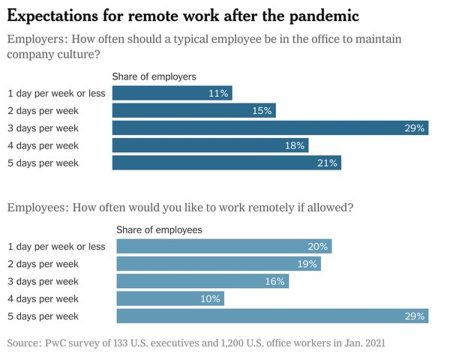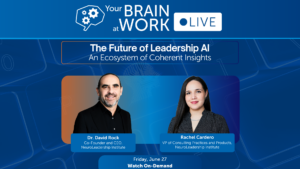Right now, it seems like hybrid work models will be the norm going forward for knowledge workers. Usually this hybrid setup will take the form of several teams that mix and match on-premise days and WFH days, with a smattering of fully remote and potentially fully on-site as well. There are a few organizations, however, trying to bring everyone back on-site fully.
So what’s the difference between leaders comfortable with hybrid work and leaders who want their teams fully on-site ASAP? It’s likely the latter group is falling prey to a number of cognitive biases that are influencing their decision.
If leaders want to make the right decisions—for their people and their organization— it’s important to consider the hybrid workplace question through the lens of neuroscience.
Expediency Bias
Let’s start with expediency bias, which is our tendency to act quickly as opposed to taking time with decisions. It crops up when we rush to judgement without considering all the facts.
Some leaders just want a quick decision and a return to some form of normalcy—in other words, they’ll fall prey to an expediency bias and bring their people back, even if those people don’t want to come back five days a week. Consider recent research from New York Times’ DealBook:

Safety bias
Safety bias underlies our tendency to believe that bad is stronger than good. We see it when we protect against loss as opposed to seeking out gain.
This type of bias could cause a decision-maker to be more concerned with the cost of an existing lease than overall employee performance. The gain (performance) is right there waiting to be had, but the potential loss (commercial real estate cost) may overpower the decision.
How are those biases overcome?
You can mitigate these biases by attempting to put some distance between yourself and the decision.
Think through the steps. No one is demanding you come up with the perfect hybrid plan tonight. Write down the questions you need to answer, and get a mix of different people together to attempt to answer those questions—and see what new questions arise as well. Keep questioning, answering, iterating, and experimenting.
The power and control question
For many leaders, however unfortunately, work is largely about control, even if that runs counter to stated missions of those leaders:
The theme of control is particularly interesting given the stated aspiration of most organizations to empower their people. The most common chief executive exaltation we hear is “We must be more innovative, agile, and adaptable.” Yet when we engage with executives we find one of the biggest drivers toward the tangible is the fear that without a firm grip anything could happen.
Once people have power, we know they don’t like to do things that could cause them to lose it. Hybrid would be a new approach to work for many, and it would take away some measure of power and control. Leaders wouldn’t be able to physically see their people consistently, so, in the eyes and brains of many managers, how would they know those people are working?
Leaders who study the science will realize that hybrid models have great promise for inclusivity and innovation, but those primarily seeking power and control will be inclined to rush people back as many days per week as possible. With certain leaders, the only path around that might be to find a new job.
Hybrid is not perfect
… but it is the direction we’re probably most likely headed in across the widest swath of organizations, so let’s consider biases, human psychological needs, and power dynamics and get this right.
We have a fulcrum chance to reinvent organizations now—to make them better and more human. We can do it, if we follow the science.






